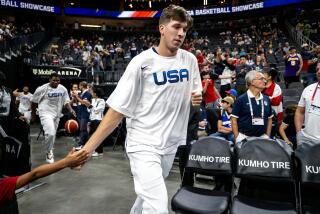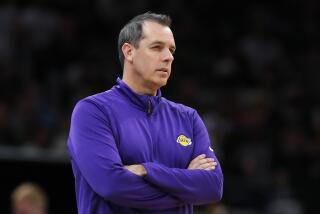Lakers guard Steve Blake has chicken pox -- no, he’s not too old
- Share via
Chicken pox, characterized by an itchy red rash known for keeping kids home from school, isn’t confined to children — adults can get it too. Just ask Lakers point guard Steve Blake.
And, maybe in time, his teammates. Kobe Bryant, Andrew Bynum and Ron Artest have not had the disease. For Lakers fans, that’s not good news.
Catching the highly contagious disease -- which is caused by the varicella-zoster virus -- is extremely possible if you missed the two recommended vaccines as a kid or never suffered through through the illness. The rash appears 10 to 21 days after infection with the virus. And people are contagious one or two days before they develop the telltale symptoms.
RELATED: Lakers hope to shake a case of chicken pox before playoffs begin
And if that’s not worrisome enough for a team vying for a championship, adults (and older kids) often have more serious symptoms from chicken pox than do younger children, according to the National Foundation for Infectious Diseases.
Its fact sheet notes: “Adults are more likely than children to die from chicken pox and have serious complications resulting from varicella infection. Currently, less than 5% of adults are susceptible to infection with the chicken pox virus; younger adults are more likely to be susceptible. “
We’re not saying anyone should panic: The Centers for Disease Control and Prevention reports just two adult deaths from chicken pox in the last decade. But adults and teens exposed to the virus may need to take anti-viral medications.
We’re also not saying adults are home-free if they’ve been vaccinated against the disease or had it as a child. They can get a “grown-up” form of chicken pox, known as shingles (herpes zoster).
After an outbreak of chicken pox or administration of the vaccine, the varicella-zoster virus lies dormant in nerve cells. In some people, mostly after age 50 or 60, the virus becomes active again, causing itching, tingling and pain in a region of the body. A few days later, a small rash appears that turns into clusters of blisters. Most commonly, the band of blisters wraps from the middle of the back to one side of the chest.
For now, however, the Lakers have bigger problems than what is most likely to occur only years from now.
More to Read
All things Lakers, all the time.
Get all the Lakers news you need in Dan Woike's weekly newsletter.
You may occasionally receive promotional content from the Los Angeles Times.










